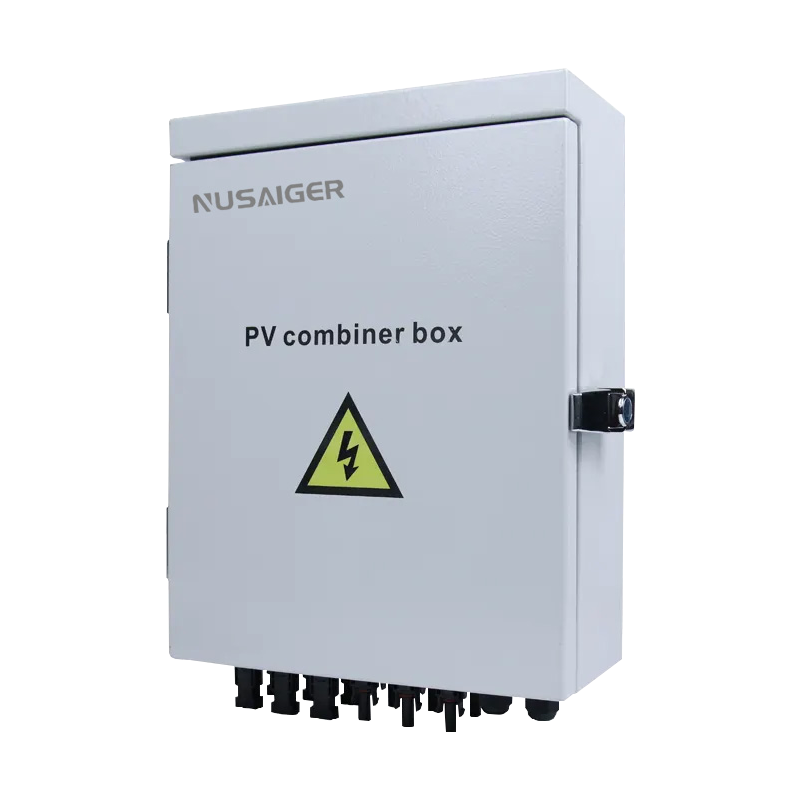How to Select the Right PV Combiner Box Based on Solar System Size and Application
PV combiner boxes are essential components in solar photovoltaic (PV) systems, playing a key role in consolidating multiple DC input strings into a single output and protecting the system from electrical faults. However, selecting the correct combiner box is not a one-size-fits-all process. It depends heavily on the system’s scale, configuration, voltage level, application environment, and regulatory compliance needs.
In this guide, we will walk you through every important factor you need to consider when choosing a PV combiner box, whether for a small rooftop installation or a large-scale solar farm.
1. Understanding What a PV Combiner Box Does
A PV combiner box collects the output of several strings of solar panels and combines them into a single main output. It typically includes:
- DC fuses or circuit breakers
- Surge protection devices (SPDs)
- Busbars
- Monitoring hardware
- Disconnect switches
- Terminal blocks for wiring
By combining the inputs and protecting the system, combiner boxes reduce wiring complexity and improve system maintainability.
2. Factors That Influence Your Choice
Choosing the right combiner box requires a thorough evaluation of multiple parameters. Let’s go through each one.
2.1 Number of Strings
Determine how many strings of PV modules will be connected. Each string typically corresponds to a fuse or breaker inside the box. If your system has 12 strings, you need a 12-input combiner box. Always allow a 10–20% buffer for expansion.
2.2 Voltage Rating
Most PV systems operate at 600V, 1000V, or 1500V DC. Make sure your combiner box and its internal components (fuses, SPDs, wiring) are rated accordingly. Never use a 600V-rated box on a 1000V system.
2.3 Current Rating
The current rating of the busbar and terminals must support the total output current. For example, if you have ten 10A strings, your main output will be 100A. Choose a combiner box rated for at least 125A to maintain safety margins.
2.4 Environmental Rating (IP Rating)
Installations in dusty, wet, or outdoor environments require combiner boxes with high IP ratings (e.g., IP65 or higher). For coastal areas or desert climates, corrosion-resistant materials like stainless steel are preferred.
2.5 Mounting Configuration
Choose between wall-mounted, pole-mounted, or rack-mounted designs. Your mounting option will influence the box size and cable entry configurations.
2.6 Surge Protection Needs
Many installers overlook surge protection. Always check if your application requires built-in Type 1 or Type 2 SPDs. For lightning-prone areas, surge protection is non-negotiable.
2.7 Monitoring Features
Modern combiner boxes often include current sensors, voltage detectors, and RS485/Modbus communications. Choose smart boxes if remote monitoring and fault diagnosis are needed.
3. Examples Based on System Sizes
3.1 Small Residential PV Systems (1–5kW)
- Strings: 1–2
- Voltage: Typically 600V
- Combiner: Optional, often integrated into inverter
- Recommendation: Compact, 2-input box with basic protection
3.2 Medium Commercial Systems (5–50kW)
- Strings: 4–12
- Voltage: 1000V
- Combiner: Essential
- Recommendation: 8–12 string inputs with SPDs and monitoring
3.3 Utility-Scale Solar Farms (50kW–MW)
- Strings: 16–32 per box
- Voltage: 1500V
- Combiner: Highly specialized with real-time monitoring
- Recommendation: 24–32 string combiner boxes, multiple outputs
4. Certification and Compliance
Always ensure your combiner box complies with local and international standards:
- UL 1741 (U.S.)
- IEC 61439 (International)
- NEC 690 compliance
- CE or TUV certification
5. Tips for Installers and System Designers
- Use combiner boxes with removable gland plates for easier cable entry
- Label each string input clearly
- Allow space inside the box for future monitoring upgrades
- Always verify wire lug compatibility
- Choose transparent covers for quick inspections
6. Frequently Asked Questions (FAQs)
Q: Can I use a combiner box without surge protection?
A: Technically yes, but it’s highly discouraged, especially in outdoor or utility-scale systems. Surge protection prevents catastrophic failures due to lightning or grid disturbances.
Q: What happens if I undersize the combiner box?
A: It can lead to overheating, premature failure, poor performance, or even fires. Always size for at least 125% of your expected current.
Q: How often should I inspect the combiner box?
A: For residential systems, inspect annually. For commercial/utility systems, inspect semi-annually or quarterly. Use thermal imaging to identify hot spots.
7. Conclusion
Choosing the right PV combiner box is one of the most critical decisions in solar system design. It affects not only the safety and performance of your system but also its scalability and compliance. Whether you’re working on a small home installation or a solar megawatt project, follow the sizing principles, environmental considerations, and standards outlined in this guide to make a reliable and future-proof choice.
Looking for expert help or need a custom combiner box designed for your project? Reach out to our engineering team today!



